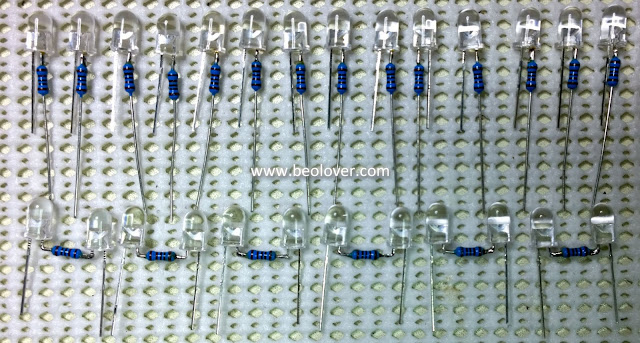*************************This post has a follow-up. Please, see
here*****************************
I recently started working on a Beogram 8000 from California. As the usual, as a first step, I replaced the electrolytic capacitors and the motor AC cap in the power block, then re-flowed the solder points of the headers, after which it was time to give the unit a first try. I pressed start and the carriage started moving, and without a record on the platter the unit activated the tonearm lift at the LP setdown point. Not what it was supposed to do. I concluded there was an issue with the record detection circuit.
This is the relevant part of the Beogram 8000 circuit diagram:
I should point out that the Beogram 8000 featured here did not have the trimmer R64 at the sensor input, i.e. is one of the earlier models.
The first spot to check is the collector of TR14, which amplifies the signal of the sensor 5PH1 as the platter ribs pass through under the sensor arm. I drove the arm manually further onto the platter to get a stable signal, and then put the oscilloscope probe to the collector. This is the signal I measured:
The dips correspond to the ribs passing under the sensor and blocking the light reflection. Unfortunately, there is no prescribed wave form in the manual, but judging from the very similar circuit in the 4002/4 models this signal was way too low.
the next step was to measure the sensor signal directly at C15, which yielded about the waveform shown in the manual:
Therefore, I suspected that TR14 had a too low gain (hfE), which is often encountered in the Beogram 4002/4 models. I extracted and measured it:
It only showed with a gain of 94, which is well below the minimum gain of 200 specified for the BC547B. I replaced it with a 2N2222 that demonstrated a gain of 215, and measured again:
Much better. The dips go to zero and the amplitude is almost 10V. Unfortunately, there is no spec in the manual for this measurement, but judging from the 4002s the above qualifies as a decent signal. I hoped at this point this would fix the issue. But no cigar. The Beogram again dropped the arm at the LP setdown point in absence of a record.
If the sensor signal is good, then the next measurement spot is at the junction between R71 and R72. I got the yellow curve in the screen below:
The triangles peak at about 7V and dip down to about 3V, in contrast to the specified 10-to-7V drop shown in the manual. This means there is a too small voltage at the base of TR16, which may mean trouble pulling the 'Disc Detector' signal (HH) properly to a logic LOW state below 0.2V.
I measured HH and that is the green curve in the graph above. At this point I though, bingo, there must also be an issue with TR15 that does the tugging at the base of TR16. I extracted it for measurement:
It came up with an hfE of 158, which is also a bit low. I replaced it with a new BC557B with an hfE of 275, above the minimum 200 spec. So far so good. I measured again at R71/72 and now the curve was according to specification:
Unfortunately, record detection still did not work, and the green curve was a bit better, but the spikes, while a bit weaker, were still present. Ok, I thought, TR16 must also be out of spec. I measured:
...and got a happy hfE of 434 (it is normal that the hfE varies a lot, and all is good as long as it is above its minimum spec, at least for most circuits.
To make sure that the chain of command was intact between TR16 and the micro controller input I grounded the collector of TR16, which should permanently disable record detection, and it should always behave as if there were no record. I pressed Play, and indeed, the arms ran across the platter in search of a smaller record, and then turned around and went back home. So that was working.
At this point I was a bit at a loss. For some reason, the pull at the base of TR16 was not strong enough, and it did not fully turn on. A mystery!
I decided to play a bit with the circuit and I replaced R72 with a 100k resistor, increasing the current by a factor 10 into the base of TR16 (or so I thought). This did not fix the issue. It turns out that the higher current was depleting C19 too quickly, reducing its voltage too fast between the passing of the platter ribs, again causing spikes in HH. This meant I needed to increase the current into C19 also, which was easily done by removing R70, which partially drains the collector of TR15 away from C19. After eliminating R70 from the circuit, it started working properly with HH going fully to zero when the ribs were visible to the sensor:
Luckily, HH also quickly restored itself to 5V when covering the sensor (simulating a record), i.e. the record detection mechanism of this Beogram 8000 is doing what it is supposed to be doing.
At this point, I am not fully satisfied with this result since I do not fully understand what is going on. I guess another 8000 where this circuit works 'as is' will need to show me the light some other day. The B&O excitement just never ends!...;-)






































































